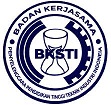Optimization of compressive strength for Aceh Besar traditional bricks using Box-Behnken design
Abstract
Keywords
Full Text:
PDFReferences
A. Ro’uf, A. Yulianto, and B. Astuti, “Pengaruh Penambahan Pasir Silika Kasar Terhadap Massa Jenis dan Daya Serap Air Batu Bata”, Jurnal Media Teknik Sipil, vol. 22, no. 1, pp. 24–30, Feb. 2024, doi: 10.22219/jmts.v22i1.29535.
N. Delgarm, B. Sajadi, K. Azarbad, and S. Delgarm, “Sensitivity analysis of building energy performance: A simulation-based approach using OFAT and variance-based sensitivity analysis methods”, Journal of Building Engineering, vol. 15, pp. 181–193, Jan. 2018, doi: 10.1016/j.jobe.2017.11.020.
Q. Xiao, V. R. Joseph, and D. M. Ray, “Maximum One-Factor-At-A-Time Designs for Screening in Computer Experiments”, Technometrics, vol. 65, no. 2, pp. 220–230, Jan. 2022, doi: 10.1080/00401706.2022.2141897.
J. Chong, E. Gonina, and K. Keutzer, “Monte Carlo methods: a computational pattern for our pattern language”, in ParaPLop’10: Proceedings of the 2010 Workshop on Parallel Programming Patterns, ACM Digital Library, 2010, pp. 1–10.
D. P. Kroese, T. Brereton, T. Taimre, and Z. I. Botev, “Why the Monte Carlo method is so important today”, Wiley Interdiscip Rev Comput Stat, vol. 6, no. 6, pp. 386–392, Nov. 2014, doi: 10.1002/wics.1314.
B. Polyak and P. Shcherbakov, “Why does Monte Carlo fail to work properly in high-dimensional optimization problems?”, J Optim Theory Appl, vol. 173, no. 2, pp. 612–627, Mar. 2016, [Online], Available: http://arxiv.org/abs/1603.00311
D. C. . Montgomery, Design and Analysis of Experiments Ninth Edition, John Wiley & Sons, Inc.. 2013, Accessed: May 08. 2025, [Online], Available: www.wiley.com/go/permissions.%0Ahttps://lccn.loc.gov/2017002355
M. Duweini and R. Trihaditia, “Penentuan Formulasi Optimum Pembuatann Minuman Fungsional dari Bunga Rosella (Hibiscus sabdariffa L.) dengan Penambahan Bawang Dayak (Eleutherine palmifolia) menggunakan Metode RSM (Response Surface Method)”, Agroscience, vol. 7, no. 2, Nov. 2017, doi: 10.1002/wics.1314.
Suprapto, Pengantar Desain Eksperimen menggunakan Python, Deepublish, 2018.
D. Sinkhonde, R. O. Onchiri, W. O. Oyawa, and J. N. Mwero, “Response surface methodology-based optimisation of cost and compressive strength of rubberised concrete incorporating burnt clay brick powder”, Heliyon, vol. 7, no. 12, Dec. 2021, doi: 10.1016/j.heliyon.2021.e08565.
D. Sinkhonde, “Modeling and experimental studies on energy consumption and properties of concrete containing waste brick powder and waste tire rubber for sustainable construction”, Clean Eng Technol, vol. 13, Apr. 2023, doi: 10.1016/j.clet.2023.100631.
S. Das, M. Maaze, N. Garg, and S. Shrivastava, “A Review of Ecofriendly Brick Production: Exploring the Use of Fly Ash and Industrial Waste in the Construction Industry”, ractice Periodical on Structural Design and Construction, vol. 30, Nov. 2024.
N. H. Zulkernain, P. Gani, C. C. Ng, and T. Uvarajan, “Optimisation of mixed proportion for cement brick containing plastic waste using response surface methodology (RSM)”, Innovative Infrastructure Solutions, vol. 7, no. 2, Apr. 2022, doi: 10.1007/s41062-022-00786-z.
P. Chindaprasirt, A. Srisuwan, C. Saengthong, S. Lawanwadeekul, and N. Phonphuak, “Synergistic effect of fly ash and glass cullet additive on properties of fire clay bricks”, Journal of Building Engineering, vol. 44, Dec. 2021, doi: 10.1016/j.jobe.2021.102942.
S. Dutta, “Optimization of Reactive Black 5 removal by adsorption process using Box-Behnken design”, Desalination Water Treat, vol. 51, no. 40–42, pp. 7631–7638, 2013, doi: 10.1080/19443994.2013.779597.
S. Oyebisi, A. Ede, H. Owamah, T. Igba, O. Mark, and A. Odetoyan, “Optimising the workability and strength of concrete modified with anacardium occidentale nutshell ash”, Fibers, vol. 9, no. 7, Jul. 2021, doi: 10.3390/fib9070041.
Badan Standardisasi Nasional (BSN), Badan Standardisasi Nasional, pesifikasi batu bata merah untuk pasangan dinding, 2000.
S. K. Subedi, “Study of Characteristics of Bricks Produced in Kathmandu Nepal”, American Journal of Civil Engineering, vol. 8, no. 3, pp. 64, 2020, doi: 10.11648/j.ajce.20200803.13.
B. N. E.-D. A. Shalaby, M. S. El-Maghraby, and A. I. M. Ismail, “Technological properties of high alumina refractories with different phosphoric acid contents”, Bull Natl Res Cent, vol. 42, no. 1, Dec. 2018, doi: 10.1186/s42269-018-0030-5.
O. Mahmoodi, H. Siad, M. Lachemi, and S. Dadsetan, “Optimized application of ternary brick. ceramic and concrete wastes in sustainable high strength geopolymers”, J Clean Prod, vol. 338, Mar. 2022.
A. M. Y. Hakim, M. El-Zeadani, and S. A. Osman, “Physical and Mechanical Properties of Concrete using Recycled Clay Bricks as Coarse Aggregate”, American Journal of Engineering and Applied Sciences, vol. 15, no. 1, pp. 88–100, Jan. 2022.
E. N. Shaqour, A. H. Abo Alela, and A. A. Rsheed, “Improved fired clay brick compressive strength by recycling wastes of blacksmiths’ workshops”, Journal of Engineering and Applied Science, vol. 68, no. 1, Dec. 2021, doi: 10.1186/s44147-021-00002-2.
S. Aprilyanti and F. Suryani, “Penerapan Desain Eksperimen Taguchi Untuk Meningkatkan Kualitas Produksi Batu Bata Dari Sekam Padi”, 2020.
K. Nazimi, J. J. Castro, S. Omi, and B. S. Ali, “Proposal of Empirical Equations for Masonry Compressive Strength: Considering the Compressive Strength Difference between Bricks and Mortar”, Buildings, vol. 14, no. 4, Apr. 2024, doi: 10.3390/buildings14041138.
S. Ghafoor et al., “Development of Construction Material Using Wastewater: An Application of Circular Economy for Mass Production of Bricks,” Materials, vol. 15, no. 6, Mar. 2022, doi: 10.3390/ma15062256.
N. F. M. Kusaimi, F. Hamzah, J. Jai, N. A. M. Zaki, and N. Ibrahim, “Compressive strength and water absorption of pavement derived from palm oil eco processed pozzolan (Epp) material as partial cement replacement”, ASEAN Journal of Chemical Engineering, vol. 20, no. 2, pp. 205–215, 2020, doi: 10.22146/ajche.60230.
X. Zhao, L. Li. B. Yang, and C. Yang, “Application of Fractal to Evaluate the Drying Shrinkage Behavior of Soil Composites from Recycled Waste Clay Brick”, Fractal and Fractional, vol. 7, no. 1, Jan. 2023, doi: 10.3390/fractalfract7010025.
H. Yu, K. Ng, and C. Lau, “New coal char-based bricks: Effects of curing temperature humidity pressing pressure and addition of superplasticizer on the physical mechanical and thermal properties”, Case Studies in Construction Materials, vol. 19, Dec. 2023, doi: 10.1016/j.cscm.2023.e02529.
H. Castillo et al., “Factors Affecting the Compressive Strength of Geopolymers: A Review,” Minerals, vol. 11, no. 12, p. 1317, Nov. 2021, doi: 10.3390/min11121317.
E. Tsega, “Effects of Firing Time and Temperature on Physical Properties of Fired Clay Bricks,” American Journal of Civil Engineering, vol. 5, no. 1, p. 21, 2017, doi: 10.11648/j.ajce.20170501.14.
H. Alabduljabbar, O. Benjeddou, C. Soussi, M. A. Khadimalla, and R. Alyousef, “Effects of incorporating wood sawdust on the firing program and the physical and mechanical properties of fired clay bricks”, Journal of Building Engineering, vol. 35, Mar. 2021, doi: 10.1016/j.jobe.2020.102106.
M. M. Nasri, H. Asrah, S. Dullah, and A. K. Mirasa, “The Effect of Moisture Content and Curing on the Properties of the Interlocking Compressed Brick”, in Journal of Physics: Conference Series, Institute of Physics Publishing, Jun. 2020, doi: 10.1088/1742-6596/1529/4/042014.
S. T. Abdulhussain, “A Comparative Study of the Physical Properties of Perforated Clay Bricks Available in the Iraqi Local Market”, IOP Conf Ser Mater Sci Eng, vol. 1067, no. 1, p. 012041, Feb. 2021, doi: 10.1088/1757-899x/1067/1/012041.
P. Halimah and Y. Ekawati, “Penerapan Metode Taguchi untuk Meningkatkan Kualitas Bata Ringan pada UD. XY Malang”, JIEMS (Journal of Industrial Engineering and Management Systems), vol. 13, no. 1, Feb. 2020, doi: 10.30813/jiems.v13i1.1694.
DOI: http://dx.doi.org/10.62870/jiss.v11i1.29638
Refbacks
- There are currently no refbacks.
 is supported by
is supported by








